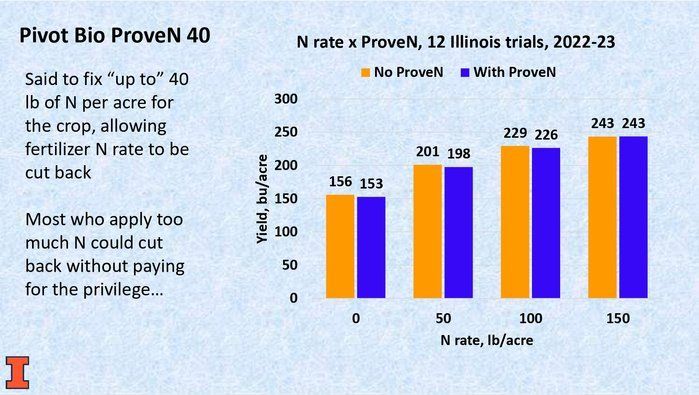University of Illinois Study on Pivot Bio’s Nitrogen Fixation Technology
Tara Desmond
January 30, 2025
Recent research from the University of Illinois has confirmed that Pivot Bio’s Proven 40 product successfully provides nitrogen to corn from the atmosphere. Dr. Fred Below, Dr. Connor Sible, and Dr. Logan Woodward conducted a study to validate the claims of Pivot Bio. Their findings have now been published in an academic journal, providing third-party verification that this microbial-based nitrogen source supplements traditional soil and fertilizer nitrogen.
Key Points
- Pivot Bio’s Proven 40 product enables corn to absorb nitrogen directly from the air, reducing dependence on synthetic fertilizers.
- University of Illinois researchers, led by Dr. Fred Below, Dr. Connor Sible, and Dr. Logan Woodward, conducted a study to validate this claim.
- Their research confirmed that nitrogen from the atmosphere is integrated into the corn plant through specialized bacteria applied to the seed.
- The product helps fill nitrogen deficiency gaps in fields, supplementing traditional sources without replacing them.
- Logan Woodward, now a PhD graduate and agronomist for Pivot Bio, continues to test new products to further improve nitrogen efficiency for farmers.
Research from University of Illinois Trials from Emerson Nafziger:







